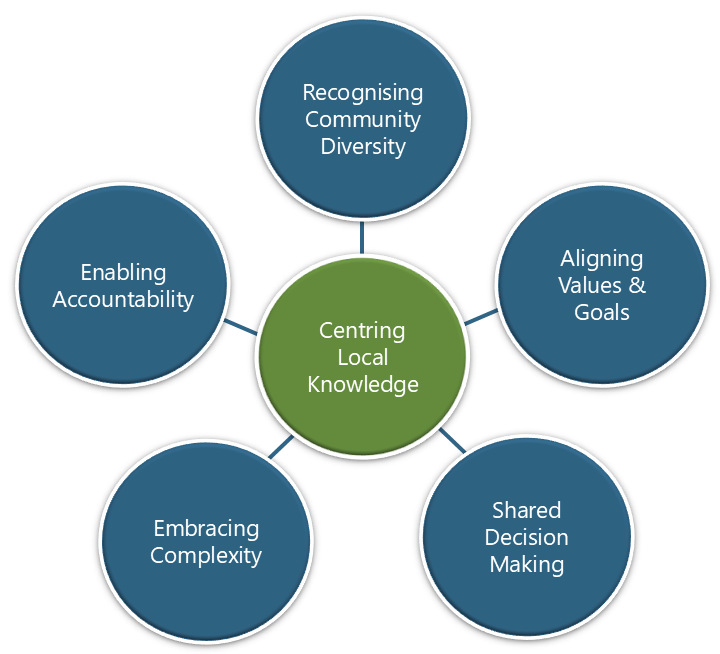Chapter 3: Principles of participatory place-based health planning
Six core principles underpin participatory place-based health planning (Figure 3.1). In summary, at the heart of participatory, place-based health planning is the recognition that local people are best positioned to understand the needs of their communities, as well as the practical realities of what may or may not be effective within their specific environment and context. This locally grounded knowledge is essential for building on community strengths, ensuring the efficient use of resources and funding, and ultimately improving health outcomes.

It is important to acknowledge that each community is unique, and within communities, there is considerable diversity. Individuals and groups may have differing needs, perspectives, and experiences. By facilitating broad and inclusive participation in health planning processes, it becomes possible to recognise these differences, work toward identifying shared goals, and ensure that all partners have a common understanding of the issues. This inclusive approach supports collective decision-making and more sustainable outcomes.
This work is inherently complex. It requires a commitment to understanding relationships and recognising that change can be challenging-often requiring stakeholders to step outside their comfort zones. Planning should not be seen as a one-time activity, but as an ongoing and adaptive process. Continuous monitoring, evaluation, and responsiveness are essential. Reporting back to the community will facilitate accountability and allow for real-time adjustments and iterative improvement over time. Each principle is explored in more detail in this chapter.


